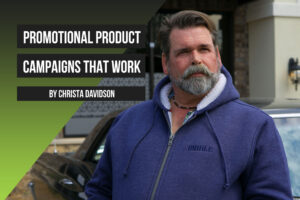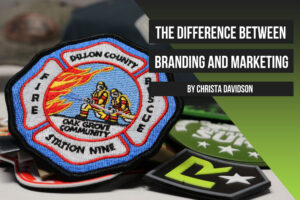Three Keys to Effectively Managing Your Brand
Authenticity
Competitive research is a huge industry. I’m not saying it doesn’t have a purpose, but it should not be what drives your brand. I have seen many companies see something a competitor does that works and decide that they need to be that way, too. Well, just because it works for a competitor does not mean it will work for you. Every company is as unique as the people that created it and your brand is an intention of core values – a personality, if you will.
Can a company do what their competitors are doing? Sure. Will it work? Probably not, and authenticity is why. The first example I can think of is New Coke. Coca-Cola was the leading brand in the soda market until the early 80’s. The Pepsi Challenge was introduced and in a blind sip test, Pepsi won more often than Coke. The full court press marketing campaign by Pepsi worked and in 1983 shortly after Pepsi started to out-sell Coca-Cola for the first time, New Coke made its debut. Now, I can only imagine what happened in that board room.
“Are they really better than us?”
“I guess people really do like the taste of Pepsi better.”
“Maybe we need to change our formula.”
“Why do they like it better?” “Is it sweeter?” “What flavor are we missing?”
You get the idea… the focus is on the wrong thing. The brilliance of Pepsi’s marketing is that it worked so well that even Coke questioned if they were really better. What they should have focused on instead was this: what are we doing right, and how can we up our game communicating that? In a blind taste test, the reality was that most people couldn’t tell which was which. But when the brands were present, Coca-Cola out-performed Pepsi. That is absolutely crucial to understand. Yes, there is a difference in taste, but it’s so subtle that when it comes to deciding which one was liked best, the decision rested primarily on the brand that they had connected with.
So, Coca-Cola saw what Pepsi was doing that worked and they decided to do it, too. They spent an incredible amount of money changing the taste of their product to be more like their competitor. They renamed and rebranded, and introduced New Coke to the world thinking that if it worked for Pepsi it would work for them. If you were around back then, you know what happened. The loyal audience they had rose up with their voices and their money and the Coca-Cola executives realized that they had made a mistake. The voices in that room that argued against changing the formula and sticking with their original business plan got to hear “You were right.” And we all know how satisfying that is. Then the marketing team bounced back with the usual Coca-Cola finesse and announce Coca-Cola Classic. They saved the brand and made it better by reconnecting to their audience in the best way. It’s one of the strongest brands now in part because of the lessons learned in this experience. The core lesson in this story? Just be you.
“It’s better to be the best version of you than to be a second-rate version of someone else.” – Judy Garland
Communication
Brand communication is every way that a customer or potential customer interacts with your company. This could be done in any number of ways including, but not limited to:
- Custom gift boxes
- Tshirts/Hats
- Promotional Products
- Events
- Logo items
- Website/Digital marketing
- Billboards
- Radio advertising
- TV commercials
- Online and paper newsletters
- Business cards
- Social media
- Online reviews
A strong brand and powerful message are only good if you can convey that message to the right people at the right time. The right message is the one that aligns with your branding goals and connects with your customer. Just to bring the example full circle, this is something that both Coca-Cola and Pepsi do well. You see them everywhere you go and the message is clear. Both brands communicate more than just a logo on a product. The brand message goes deeper, and they communicate it in everything they do. Their reward is brand loyalty.
Consistency
Just like any kind of communication, it needs to be clear, concise and consistent. That is every communication – from something simple like your email signature to the t-shirts and pens you hand out to the content that you post. Branding communication is an accumulation of every day words and actions that make up a perception of your company. When your brand message consistently aligns with your brand and connects with your customers, you are building brand equity and credibility.
Again, one of Coca-Cola’s strengths. The brand and the message has been on point for decades, and the longer they hold on to who they are and communicate that message, the stronger the brand gets.
Consistently presented brands are 3.5 times more likely to enjoy excellent brand visibility than those with an inconsistent brand presentation.
Recognition equals value: out of 40 million images posted to Instagram every day, over 10,000 of them are of the Starbucks logo – and for the most part, not on purpose.
Repetition brings recognition. Recognition builds trust and credibility. Over time, those that we trust become a part of our lives. Continual positive brand equity creates a solid foundation that supports HR with higher employee satisfaction, Sales with instant credibility and value, Customer Success with increased communication…you get the idea. Branding consistency can affect the entire company.
The Forgotten Branding Channel
Don’t forget about your employees! They talk about where they work, they interact with your audience and they form opinions of the brand. What they say about who you are is profoundly important to your brand message over time. Be aware of that and treat them as such, and not only will your brand equity increase significantly, but your employee satisfaction and productivity will soar! Begin with them and the rest will follow – Authenticity, Communication and Consistency are the keys.
Need help with any of these? I’m here for you.







